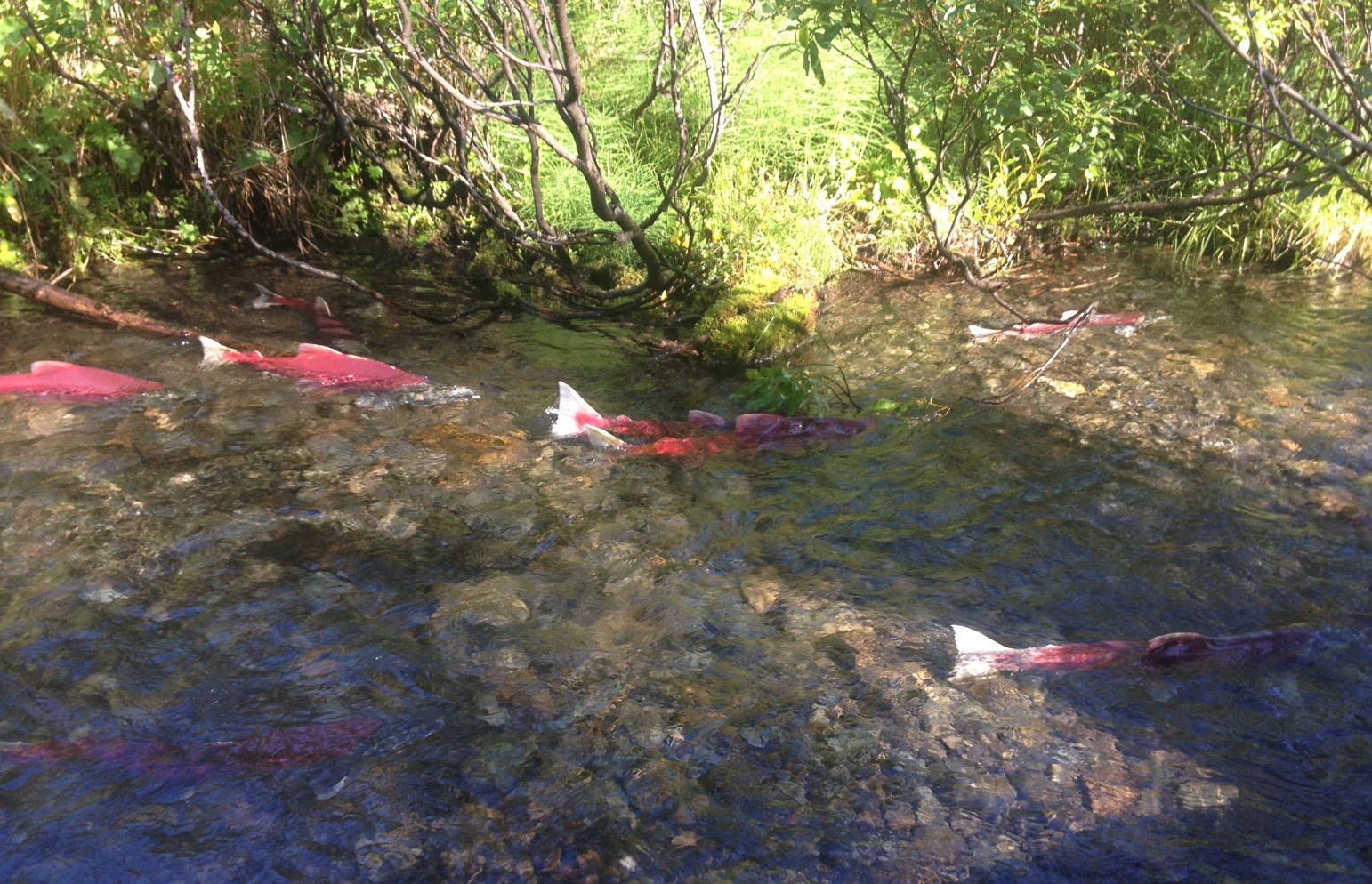What is being done collaboratively to ensure the Kenai Peninsula’s aquatic habitat remains healthy for fish?
The Kenai Peninsula hosts a number of non-profit organizations, borough, state and federal agencies all tasked at some level with ensuring the Peninsula’s aquatic habitat remains healthy and intact. Imagine if there was a way for organizations to come together and leverage individual talents, share knowledge and develop a mutual vision and purpose.
Fortunately, the Kenai Peninsula is host to one of the twenty National Fish Habitat Partnerships, an innovative and collaborative model for conservation supported by the U.S Fish and Wildlife Service.
First, a little history. Roughly 17 years ago, a group of people gathered to discuss the concept of developing a partnership for fish habitat similar to what exists for waterfowl and their habitats through the North American Waterfowl Management Plan. The vision was simple – locally driven partnerships scattered across the U.S. galvanized into action by the threat of aquatic habitat losses, a coalition of anglers, conservation groups, scientists, state and federal agencies, tribes, and industry leaders, all on the same page.
In a short time this concept gained traction as fisheries professionals and others stakeholders recognized the need for a unified effort to conserve aquatic habitats. The National Fish Habitat Action Plan was drafted, funding arrived and the implementation phase began. The strategy includes a network of Fish Habitat Partnerships, selected based on important aquatic habitats, distinct geographies, fish species, or system type such as a lake or estuary. In 2008, the Kenai Peninsula was chosen as a candidate Fish Habitat Partnership and ultimately approved full partnership recognition under the early leadership of Robert Ruffner.
Since 2011, the Kenai Peninsula Fish Habitat Partnership (KPFHP) represents a partnership driven approach that includes a non-regulatory, science-based strategy developed by a locally-led steering committee and supported by broad-based membership. The strategy includes a systematic approach of focusing on what is important to conserve along with potential threats that could negatively affect fish habitats.
Each fall, the KPFHP solicits proposals for projects that address both a target ecosystem as well as potential threats to either the freshwater or marine environment that are characterized in a Conservation Action Plan. In freshwater systems, the most significant threats are aquatic invasive species, warming climate, and residential development in riparian l areas. Highest rated potential threats to the marine environment include incompatible shoreline development, beach alteration, and large scale oil spills. The types of projects funded by the KPFHP include the Kenai Watershed Forum’s Streamwatch program, Cook Inlet Keeper’s stream temperature monitoring, as well as the Alaska Department of Fish and Game’s use of environmental DNA as a way to detect invasive northern pike.
Other KPFHP activities include hosting a biennial Science Symposium where the public is invited to learn, share and exchange ideas about fish habitat science and conservation. Partner organizations share their work through presentations covering a wide range of topics pertinent to fish habitat on the Kenai Peninsula.
Nationally, the National Fish Habitat Partnership annually publishes “Waters to Watch,” a collection of rivers, streams, estuaries, lakes and watershed systems that need a collective effort to restore, enhance, or protect. These waters represent the best of the best, voluntary habitat conservation efforts in progress, where local Fish Habitat Partnerships are supporting on-the-ground work. Numerous waters throughout Alaska have been highlighted and the work of a partnership effort is showcased on a national stage. Most recently, the Anchor River was highlighted as an example of a waterway where the trifecta of research, restoration, and protection, has resulted in a system more resilient to a warming climate and increased development.
Other larger efforts include nationwide assessments of human driven impacts on fish habitat throughout the United States. Twenty-two percent of inland stream miles in the Lower 48 states are at high or very high risk of habitat degradation; predictably, watersheds in or near urban areas or areas with intensive agriculture are most at risk.
Fortunately, the assessment found the risk of stream habitat alteration in Alaska is generally low, mostly as a result of landownership that limits development. However, developing areas (such as the Kenai Peninsula) are showing signs of habitat alteration, especially when rivers flow from protected areas to areas where riparian areas are less protected, habitat stress can increase due to development. Protection of existing intact habitat was identified as key strategy in Alaska to make the best use of limited people and money resources as it is far less expensive to protect habitat than rehabilitate once damaged.
In 2018, the KPFHP will kick off the year with a full membership meeting that will include 33 organizations from across the Kenai Peninsula, gathering to discuss current topics regarding fish habitats. Organizations or individuals interested in the KPFHP should contact Coordinator Jack Sinclair at jack@kenaiwatershed.org or 907-260-5449.
Kyle Graham is a Fish &Wildlife Biologist at the Kenai Fish &Wildlife Conservation Office. Find more information about Kenai National Wildlife Refuge at http://www.fws.gov/refuge/kenai/ or http://www.facebook.com/kenainationalwildliferefuge.

